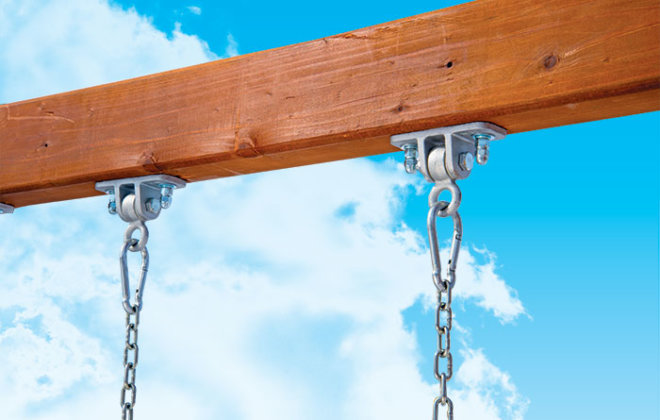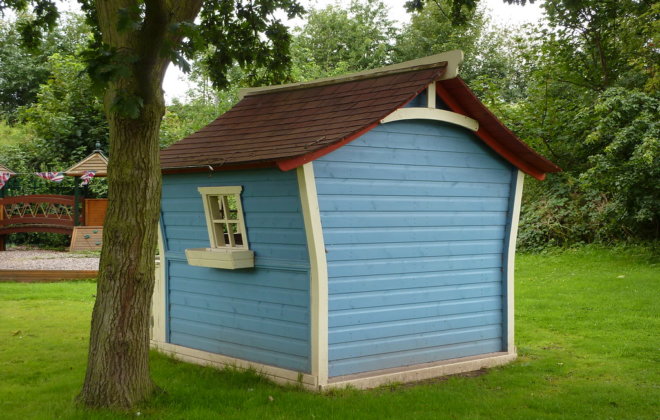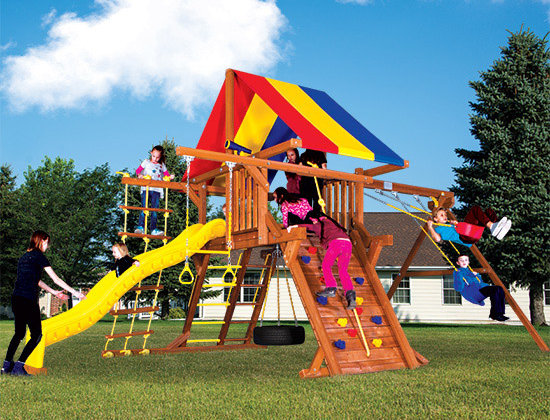The Benefits of Rainbow Rock Wall Ladders
One of the many fun play options that Rainbow Play Systems offers is a rock climbing wall. This colorful rock wall ladder comes standard on the Rainbow castle lines. Not only is this play system component a fun way for children to scale their Rainbow, but it also provides great health benefits.
A History of Rock Climbing Walls
Artificial climbing walls were first created in 1964 in the United Kingdom by a physical education teacher. It took more than 20 years for this exercise trend to reach the States. The first indoor climbing gym opened in Seattle in 1987.
Since then, this close-to-home version of rock climbing has surged in popularity, and rock climbing walls can be found in gyms, public parks and even aboard cruise ships as a fun, sport activity.
Physical Health Benefits of Rock Walls
The Center for Disease Control and Prevention (CDC) rates rock climbing as a vigorous-intensity physical activity. The higher the intensity of an exercise, the less time you have to spend to begin to reap the benefits of your activity. The average adult can burn about 800 calories and hour during a rock-climbing ascent.
Rock climbing is a whole body exercise. As you climb, you engage multiple muscle groups at once. Climbing relies on both upper body and lower body strength, as well as intricate foot work, flexibility and overall stamina.
Mental Health Benefits of Rock Walls
For many large-scale rock climbers, this activity’s benefits goes beyond the physical. It is a confidence builder and stress reliever. The climber learns to block out outside stimuli and focus on their balance and how to achieve their goal. Climbing requires perseverance and determination and can build the climber’s self-esteem when he or she overcomes challenges.
Rainbow Rock Wall Ladders For Children
Now, a Rainbow Rock Wall Ladder isn’t exactly the same as scaling Everest, but for your child, this simplified setup can begin to establish the healthy habits that can grow into large-scale rock climbing as they grow.
Categories
- Benefits of Play (17)
- Family Fun (3)
- Featured (3)
- Financing (1)
- Goalsetter Basketball Systems (16)
- Playhouses (1)
- Rainbow Play Systems (28)
- Springfree Trampoline (40)





